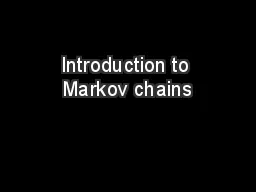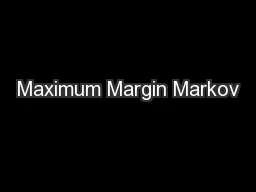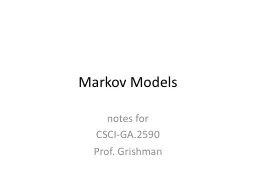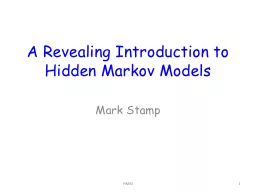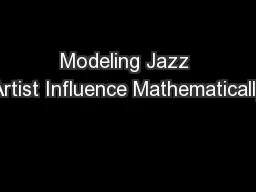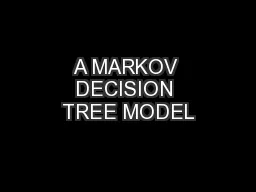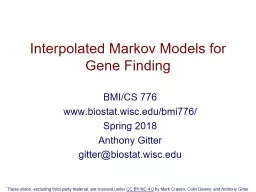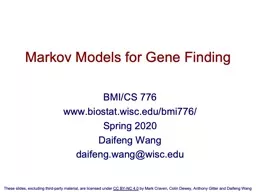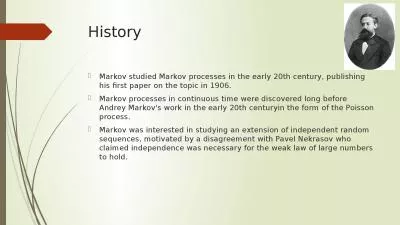PPT-Introduction to Markov chains
Author : olivia-moreira | Published Date : 2017-10-19
part 2 1 Haim Kaplan and Uri Zwick Algorithms in Action Tel Aviv University Last updated April 18 2016 Reversible Markov chain 2 A distribution is reversible
Presentation Embed Code
Download Presentation
Download Presentation The PPT/PDF document "Introduction to Markov chains" is the property of its rightful owner. Permission is granted to download and print the materials on this website for personal, non-commercial use only, and to display it on your personal computer provided you do not modify the materials and that you retain all copyright notices contained in the materials. By downloading content from our website, you accept the terms of this agreement.
Introduction to Markov chains: Transcript
Download Rules Of Document
"Introduction to Markov chains"The content belongs to its owner. You may download and print it for personal use, without modification, and keep all copyright notices. By downloading, you agree to these terms.
Related Documents

